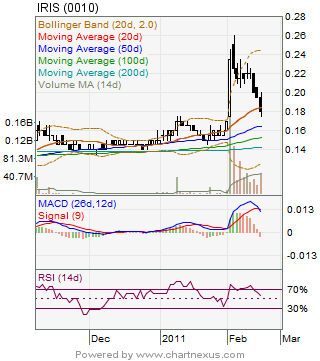Investing in the stock market can be an exciting and potentially lucrative venture. While many investors focus on well-established companies listed on major exchanges, there is another avenue that offers a unique allure: over-the-counter penny stocks.
These stocks, often trading at low prices, have the potential to yield significant returns for those willing to take the risk.
Definition and Characteristics of Over-the-Counter Penny Stocks
Over-the-counter (OTC) penny stocks are shares of small companies that trade outside of major stock exchanges. These stocks have lower market capitalization and liquidity compared to larger, more established corporations.
OTC penny stocks are not subject to the same rigorous listing requirements and regulatory oversight as larger publicly traded companies. This lack of regulation can make it harder for investors to obtain accurate information about these stocks’ financial health and operations.
Additionally, OTC penny stocks may be more susceptible to fraudulent activities or manipulation. Investors should exercise caution and conduct thorough research before considering investments in this market segment.
Appeal to investors looking for high returns and low entry point
Investors are drawn to over-the-counter (OTC) penny stocks due to their potential for substantial gains. With low share prices, even a small increase can result in significant percentage gains, making them attractive for those seeking high returns in a short period.
OTC penny stocks also provide access to emerging companies in growing industries like technology, biotechnology, or renewable energy, where rapid growth and innovation are possible. Investing early in these companies can be highly rewarding if they succeed.
However, caution is advised due to higher volatility and limited regulatory oversight in this market segment.
Understanding the Risks Involved
Investing in OTC penny stocks comes with risks that investors need to understand. Unlike stocks on major exchanges, OTC penny stocks have less regulation and oversight, leading to limited transparency. Financial information may be scarce, making it challenging to assess the company’s financial health.
These stocks are highly volatile and susceptible to market manipulation, which can artificially inflate prices. Being aware of these risks is crucial for informed decision-making.
| Risk Factors |
|---|
| Lack of regulation and oversight |
| Limited availability of financial information |
| High volatility and susceptibility to market manipulation |
Researching Over-the-Counter Penny Stocks
When it comes to investing in over-the-counter (OTC) penny stocks, thorough research is crucial to mitigate the associated risks. By delving into reliable sources of information, investors can make more informed decisions and increase their chances of success.
One primary source for obtaining valuable insights on OTC penny stocks is the U.S. Securities and Exchange Commission (SEC) filings and reports. The SEC mandates that public companies, including OTC penny stocks, regularly disclose financial information and material events through these filings.
Analyzing these reports can provide a deeper understanding of a company’s operations, management team, financial health, and potential risks.
In addition to SEC filings, staying up-to-date with financial news outlets and reputable websites is essential for effective research on OTC penny stocks. These sources often offer analysis, industry trends, and updates on specific companies.
By keeping a close eye on this information, investors can gain valuable knowledge that will help them make well-informed investment choices.
To further enhance their understanding of potential investment opportunities in specific sectors, investors should explore industry-specific publications or online forums dedicated to the sector in which a company operates. These platforms provide unique insights into emerging technologies or market trends within a particular industry.
Engaging with experts or enthusiasts in these communities opens up opportunities for discussion and allows investors to benefit from diverse perspectives.
By utilizing these reliable sources of information and conducting thorough research, investors can navigate the unpredictable nature of OTC penny stocks more effectively. This knowledge empowers them to make informed decisions based on comprehensive analysis rather than relying solely on speculation or hearsay.
Assessing the Company’s Financial Health
To evaluate an investment in a penny stock accurately, it is crucial to analyze the company’s financial statements. The balance sheet shows assets, liabilities, and shareholders’ equity, while the income statement reveals revenue, expenses, and profitability.
The cash flow statement outlines cash inflows and outflows, providing insights into liquidity. Assessing profitability helps determine sustainable earnings generation. Evaluating debt levels assesses financial leverage and potential risks. Liquidity ratios indicate the ability to meet short-term obligations.
| Key Areas |
|---|
| Reviewing balance sheets, income statements, and cash flow statements |
| Assessing profitability |
| Evaluating debt levels |
| Analyzing liquidity ratios |
Identifying Promising Over-the-Counter Penny Stocks
When seeking potential investments in OTC penny stocks, focus on emerging industries or innovative technologies. Look for companies with disruptive technologies or unique products/services, as they often have significant growth potential.
Conduct thorough research on a company’s competitive advantage, such as intellectual property rights or strategic partnerships, to evaluate its long-term prospects. Analyze financial metrics and consider the management team’s experience. Stay informed about industry trends to identify emerging opportunities.
By applying these strategies, investors can increase their chances of identifying promising OTC penny stocks with growth potential.
Diversification Strategies for Over-the-Counter Penny Stocks
Diversification is a crucial strategy when it comes to investing in over-the-counter (OTC) penny stocks. These types of stocks carry inherent risks, so spreading investments across multiple stocks and sectors can help mitigate potential losses.
By creating a diverse portfolio of OTC penny stocks, investors can effectively spread their risk across different companies and sectors, reducing exposure to any single stock or industry-specific risks.
One effective approach is to invest in OTC penny stocks from various industries. This ensures that even if one sector experiences a downturn, the overall impact on the portfolio will be minimized. For example, allocating funds to companies in technology, healthcare, energy, and finance sectors can provide a well-rounded mix of investments.
Moreover, it is important for investors to set realistic expectations when it comes to returns. Avoiding the get-rich-quick mentality and focusing on long-term growth prospects are key factors in achieving success with OTC penny stocks.
While these stocks have the potential to yield significant returns, it’s important not to rely solely on short-term gains. Instead, consider the long-term growth potential of the companies you invest in.
Researching and analyzing each OTC penny stock before investing is also vital. Evaluating factors such as financial health, market trends, management team expertise, and competitive advantages can provide valuable insights into the potential performance of a stock.
By conducting thorough due diligence, investors can make informed decisions and reduce the chances of making poor investments.
In summary, diversifying investments across multiple OTC penny stocks from various sectors can help mitigate risks associated with this type of investment. Setting realistic expectations for returns and conducting thorough research are essential steps to ensure a more balanced approach to investing in these high-risk securities.
Remember that diversification is an ongoing process that requires continuous monitoring and adjustment as market conditions change.
The Importance of Timing in Over-the-Counter Penny Stock Investments
Timing is crucial in OTC penny stock investments. By recognizing market cycles, understanding trends, monitoring trading volumes, and analyzing price patterns, investors can identify potential entry or exit points with precision. This knowledge helps maximize returns and manage risk effectively.
Setting clear rules for cutting losses or taking profits based on analysis protects investments from significant losses and capitalizes on gains. In the highly volatile world of penny stocks, timing plays a key role in achieving profitable outcomes.
[lyte id=’XeEJKuX9hnE’]







